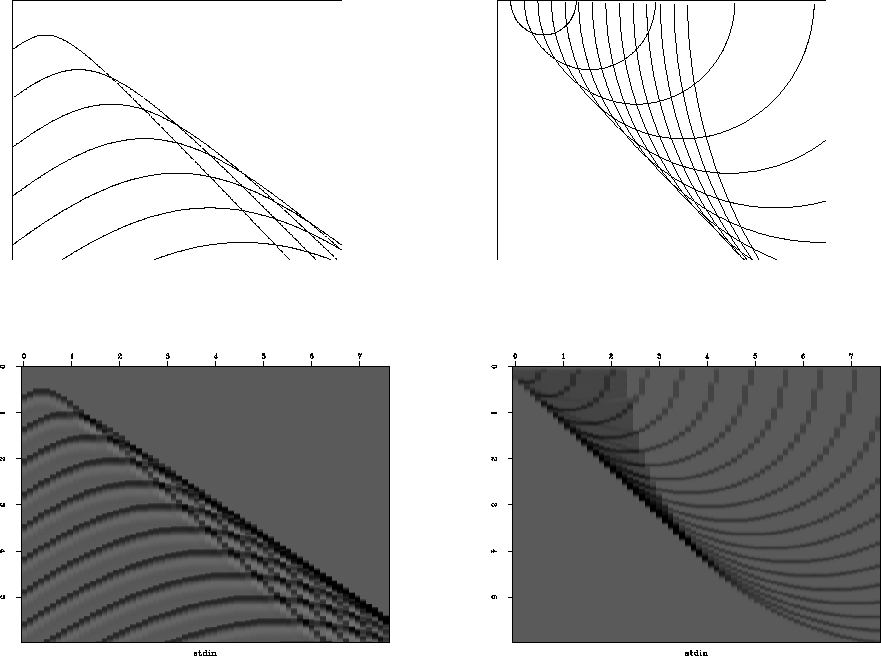 |
Figure 3 Echoes collected with a source-receiver pair moved to all points on the earth's surface (left) and the ``exploding-reflectors'' conceptual model (right).
Figure 3 shows two wave-propagation situations.
 |
Notice in the figure that the ray paths in the field-recording case seem to be the same as those in the exploding-reflector case. It is a great conceptual advantage to imagine that the two wavefields, the observed and the hypothetical, are indeed the same. If they are the same, the many thousands of experiments that have really been done can be ignored, and attention can be focused on the one hypothetical experiment. One obvious difference between the two cases is that in the field geometry waves must first go down and then return upward along the same path, whereas in the hypothetical experiment they just go up. Travel time in field experiments could be divided by two. In practice, the data of the field experiments (two-way time) is analyzed assuming the sound velocity to be half its true value.
Figure 4 shows how points making up a line reflector diffract to a line reflection, and how points making up a line reflection migrate to a line reflector.
 |